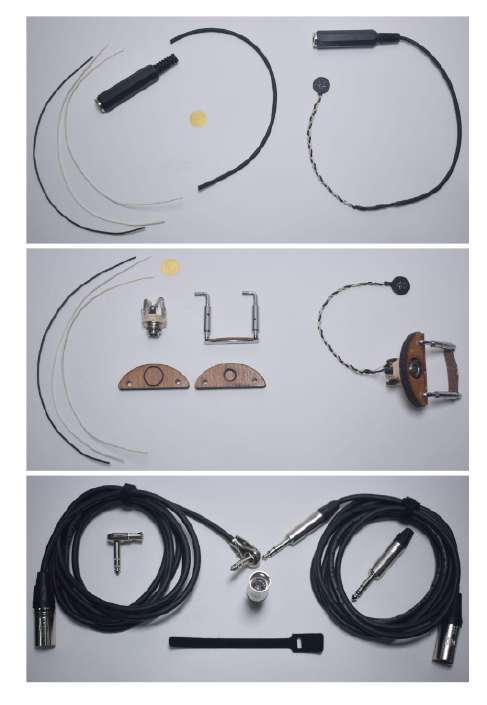Unique Registration Number: GSIC-529
Innovator Name:- Anand Richard Lobo

Contact No: +917507648215
Project Objective:
To build a better piezoelectric microphone / preamplifier for string instruments and other
recording applications
Contact Email:
anandrlobo@gmail.com
Abstract:
Piezoelectric microphones (piezo pickups) are generally frowned upon in the professional audio
industry because they are known to sound ‘tinny’; generally associated with a sharp, high-pitched
audio signal with no ‘body’ or ‘warmth’ i.e. almost no low-frequency content.
Even so, many brand-name manufacturers still create many varieties of piezoelectric microphone,
and while cheaper ones do nothing to help matters, even expensive, branded piezo pickups have
some of the same problems, despite seemingly different designs.
This piezoelectric microphone is designed to be a significant improvement over existing products,
thanks to:-
- different design of the piezoelectric element, and
- a better design of preamplifier circuit
Project Outcome/result/findings:
The microphone design was originally built for acoustic musical instruments, and as a bonus
it can, in fact, be used on almost any surface from which the user wants to record mechanical
(acoustic) vibration. This can be extended to also record sounds underwater, if the piezoelectric
transducer and its connections can be suitably waterproofed.
As the creator of this product, I have been using the microphone continuously for over 2 years
since coming up with the design, and sold a few prototypes to other musicians who are also using
it regularly with good success
Innovative Approach: (in 50 words)
The piezoelectric disc, and the circuit inside the preamplifier, is arranged in such a way as to
reduce electrical interference (EMI) through a widely-used configuration known as ‘differential
signal’ or ‘balanced audio’. This provides a clear, powerful sound, while minimizing the ‘hum’ of
electrical noise.
In addition, powering the preamplifier circuit uses an industry standard called ‘phantom power’
which is available on practically all professional audio equipment. This avoids the need for
constantly buying and maintaining batteries, reducing e-waste

